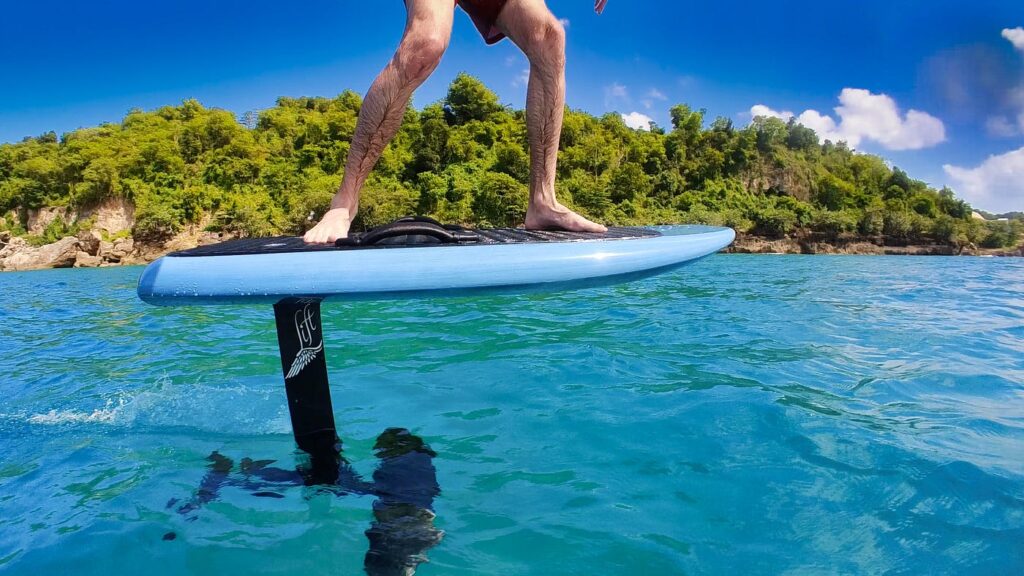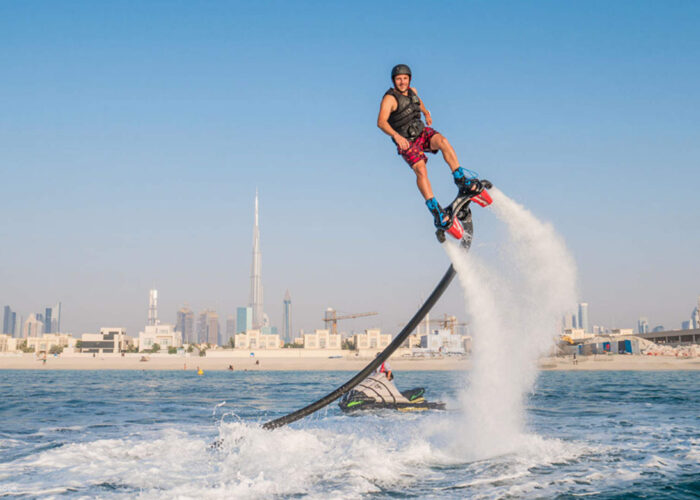
Experience the thrill of gliding over water with Electric Foiling!
Electric Foiling is an innovative way to glide silently over water without leaving a wake or requiring wind or waves to propel you forward. It’s a super fun ride and, with the right board configuration, it’s easy to master even for novices.
The popularity of eFoils is rapidly increasing, making it a favorite among water sports enthusiasts and adventurous yacht charter guests. But which eFoil is best for your yacht?
Fliteboard and Lift have been in a competition to bring eFoils to the market. Lift won the race, but at a greater cost. While Lift added an electric motor to an existing foiling board, Fliteboard spent time perfecting an eFoil from the ground up, using advanced parametric models and digital wind-tunnel technology. The differences between Fliteboard’s America’s Cup lineage and Lift are significant.
We have included both Lift and Fliteboards in our rental and sales product line, as these are the two best options on the market. But which one is better?
Here are three major things that set Fliteboard apart when it comes to Ridability, Safety, and Control.
Ride-ability
Fliteboards have their propellers in-line with the main hydrofoil wing, resulting in balanced and centred thrust that moves the rider forward. This means there’s no pitching momentum that can severely impact the rider’s stability.
Lift added their propeller on an existing hydrofoil mast, which results in an unfavourable and less predictable momentum build-up that can cause the board to nose-dive. This is no issue for experienced surfers, but it is the main complaint from beginners.
In our experience, Fliteboards are easier to master for beginners and are therefore a great choice for charter yachts seeking to entertain their guests.
Safety
It’s a well-known fact that batteries and battery-powered devices can pose safety risks when they’re poorly designed, or mismanaged. This is why battery-powered devices, including eFoils, require special attention from captains and crew.
Battery issues and battery-induced fires onboard yachts are often caused by Lithium-ion batteries that are charged when they’re too hot. Without a temperature sensor in the Battery Management System (BMS), the cells can overheat and risk combustion. However, Fliteboards are different!
Fliteboards have three backup systems that safeguard their battery circuits. Their BMS maintains equal voltage among the battery cells and reduces engine power if any discrepancy occurs, preventing overheating. Additionally, a visual indicator on the Flitecell battery shows if there has been water ingress into the battery housing. Lift boards lack this feature.
Fliteboards have a reliable connection between the electric motor and the waterproof wireless handheld controller, with zero complaints received during the last rental season. In contrast, Lift devices had four failures out of six.
To maintain a stable ride, an eFoil should maintain a consistent speed. Lift boards use a linear response trigger that increases the board’s speed the more the trigger is pressed. This design can be difficult for beginners because reducing the speed to gain stability is challenging, resulting in further instability. However, Fliteboard has a radically different trigger system that eliminates this problem. Riders just need to keep the trigger pressed and change speed with the controls on the upper part of the controller. Launch assist, cruise control, and auto-shutoff functions are also provided through proprietary algorithms.

